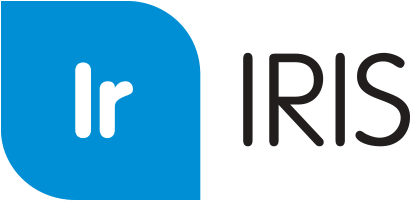- “Is enrollment up versus this time last year?
- “How well are we doing at retaining that cohort?
- “How many will graduate, and how many will graduate on time?”
Our goal in this blog — whether you’re a provost or a programmer — is to provide some specifics that will help you and others at your institution engage in some new and meaningful discussions around enrollment, retention, and student success. The plan to accomplish this will be by sharing how three specific schools have used technology to answer these questions and to provide some of their results (whether they be related to the efficiency of their operations or to achieving their mission). In hopes of making it more applicable to you, the three examples cover three different types of institutions:
- 4-year public university
- 4-year private university
- Community college
ENROLLMENT: JACKSONVILLE STATE UNIVERSITY
Jacksonville State University (JSU), in Alabama, had a challenge: it needed an efficient way to answer the enrollment management questions that were arising. The strategy, according to the Director of Enrollment Management at JSU, was to build dashboards and reports that access either or both:
- The Student system (Banner)
- The Customer Relationship Management system (CRM Recruit)
SOLUTIONS & BENEFITS ACHIEVED
A Prospect Dashboard was created for the Admissions department, which uses it to respond to departments offering very specialized programs. For example, Admissions staff will look at the dashboard to see how many students are anticipated to fill a particular program and will use that information to determine how many sections will be required.
Another way the Prospect Dashboard is used is the Drama department utilizes it to identify all accepted applicants – without having to call Admissions or IT – so they can better advertise the upcoming production to the students most likely interested in participating.
JSU also deals with weighty questions such as, “Where are we in the enrollment funnel?” Standard charts that are supplied with systems (like ERPs and CRMs) often access only that one system. So JSU’s enrollment team developed an interactive chart that allows them to drill down from one system to another. The bars of a chart show enrollment funnel data from CRM Recruit, including numbers associated with the following categories:
- Prospects
- Applied
- Admitted
- Registered
- Enrolled
By drilling down, staff can see information such as (within “Applied”) the Citizenship status (source: Banner). For local events, they can then select American citizens. Next, they can see a breakdown of in-state/by-county, as well as out-of-state/by-state. Admissions staff value the ability to see which Alabama counties, and which states, have the largest number of applicants, so that they can make decisions accordingly.
RETENTION: LA SALLE UNIVERSITY
La Salle University, in Pennsylvania, has also achieved significant success in their enrollment reporting, but, for now, we will focus on their retention initiative. Strategically, La Salle desired better answers around their student retention. As with many institutions, having a culture of evidence was becoming increasingly important. The Undergraduate Freshmen Retention dashboard they created was a powerful start. It allowed users to select
- The start/end terms for analysis
- Multiple filters
For instance, they could display an interactive bar chart, focused on freshmen only, of the longitudinal Fall-to-Fall retention trend for that cohort. From there, they could then:
- Drill into details from any of the years, to learn more
- View bar charts comparing:
- Fall-to-Fall retention
- Fall-to-Spring Retention for those same students.
La Salle is still in the first year of having access to this information, and some of the results they’re seeing – per the Director of Business Intelligence and Institutional Research – include:
- A dean receives scheduled reports every week and shares them with directors – enabling users to take ownership of their higher education data
- The Assistant Director of Retention is studying trends for different schools and groups of students – helping various offices and departments understand these trends
- A dean can more quickly see – and connect with – at-risk students
- Financial and academic needs are being pinpointed more quickly
- Reporting helps identify gaps (e.g. “Who arrived in an at-risk category?”) and needs (e.g. “Who was able to make progress, and why?”)
- Deans are better equipped to communicate with department chairs, sharing information to help them see and finalize the best pathways to take
STUDENT SUCCESS: JEFFERSON STATE COMMUNITY COLLEGE
Increasing Cohort Graduation Rates was challenging for Jefferson State Community College. Compared with peers in the state of Alabama, JSCC had consistently ranked near the bottom. Cohort Graduation Rates are the first-time, full-time freshmen enrolled in the fall of each year. To be considered a graduate of the cohort, the student must be graduated within 3 years. JSCC needed efficiency and effectiveness in regard to:
- Automation of reports
- Better communication with students enrolling in classes not required by their major
- Identifying students nearing completion of degree
- Capturing hard data on effectiveness of communication
Their 2010 strategy included creating a “Technology Task Force” consisting of:
- Administration
- Enrollment Services
- Business Office
- IT
One of the projects the task force undertook was to evaluate the admissions application process. This involved examining both the communications and transcript processes. The collaboration encouraged by this task force shifted both their culture and their reporting.
RESULT
- The only paper output is the student’s final acceptance letter
- Under the task force’s direction, ONE thorough report was created:
- Reads data from Banner and their degree audit system
- Following financial aid rules, it displays error messages for classes in question
- Initiates emails to students notifying them of errors
- Runs 15-20 times during registration periods and daily during the week before registration
- This process has been used for the past 5 years
- For Fall 2017, JSCC announced that, consistently, 95-97% of students are in correct classes that apply toward their major.
- Graduation rates have risen every year since 2010.
WRAP-UP
By hearing how student-related technology initiatives are utilized at other institutions and helping them achieve positive results, hopefully you’ve gained insight on how to affect strategic progress at your college or university when it comes to enrollment, retention, and student success.








0 Comments
0 Comments